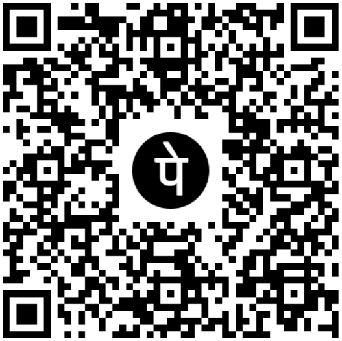Read more
The Front-End Developer’s Toolkit for 2025
By 2025, front-end development has advanced to a new level of intelligence, speed, and design awareness. Let's examine the duties of front-end developers, their distinctions from back-end developers, and the fundamental resources they require to succeed in the modern digital environment.
Who is a Front-End Developer?
A front-end developer builds the visual and interactive parts of websites and apps — the things you see, touch, and experience as a user. Think navigation menus, landing pages, animations, sliders, dashboards, and forms. If it’s on your screen and you can interact with it, a front-end dev made it happen.
They translate UI/UX design into actual code using tools like HTML, CSS, and JavaScript. And in 2025, their role has expanded: it’s not just about writing pretty code — it’s about creating accessible, responsive, and delightful user experiences.
🧠 Front-End vs. Back-End Developers — What's the Difference?
Let’s simplify this with an analogy:
Imagine a restaurant.
The front-end developer is the waiter: presenting the food, the menu, and your table — all neat, polished, and user-friendly.
The back-end developer is the chef and kitchen crew: handling orders, cooking, and managing the system behind the scenes.
| Feature | Front-End Developer | Back-End Developer |
|---|---|---|
| Focus | User Interface (UI) | Server, Database, APIs |
| Tech | HTML, CSS, JS, React | Node.js, Python, SQL, MongoDB |
| Goal | Seamless User Experience | Data Handling & Logic |
| Tools | Browser, Figma, DevTools | Postman, Docker, Cloud services |
🧰 The 2025 Front-End Developer’s Toolkit
Front-end development evolves fast — and in 2025, the expectations are higher. Here’s what’s in a modern front-end dev’s toolbox:
🌐 1. Core Languages (Still Unbeatable)
-
HTML5 – The structure of the web
-
CSS3 – Styling, layout, animations
-
JavaScript (ES6+) – Interactivity and logic
⚛️ 2. JavaScript Frameworks & Libraries
-
React.js – Still the leader, perfect for scalable apps
-
Vue 3 – Lightweight and easy to integrate
-
Svelte – The rising star, loved for speed and simplicity
-
Next.js – React-based framework for fast, SEO-friendly websites
🎨 3. Styling & UI Libraries
-
Tailwind CSS – Utility-first, responsive design made easy
-
ShadCN UI / Material UI – Ready-to-use components
-
Framer Motion – For adding smooth animations without the headache
✨ 4. TypeScript
Think of it as JavaScript with a safety net. TypeScript helps prevent bugs, improve team collaboration, and scale large projects.
🛠️ 5. Build & Dev Tools
-
Vite – Ultra-fast bundler
-
Webpack / Turbopack – For larger, complex apps
-
ESLint + Prettier – To keep your code clean and consistent
🔍 6. Debugging & DevTools
-
Chrome DevTools – Inspect elements, debug styles
-
React DevTools – Dive into your component tree
-
Redux DevTools – Great for state management debugging
🔬 7. Testing Tools
-
Vitest / Jest – Fast unit testing
-
Cypress / Playwright – For end-to-end testing
🤖 8. AI Coding Assistants
-
GitHub Copilot – Autocompletes code like magic
-
ChatGPT – Great for logic suggestions, code explanation, or generating UI snippets
🌍 9. Version Control
-
Git + GitHub – Industry standard for collaboration, versioning, and backup
🧩 10. Design & UX Understanding
-
Front-end devs now collaborate closely with designers — basic knowledge of Figma, color theory, UX principles, and accessibility standards (WCAG) is a big plus.
🔮 Final Thoughts: It’s About Experience, Not Just Code
Front-end development isn’t just about building pretty screens. It’s about solving problems creatively, making users feel at ease, and delivering functional beauty.
In 2025, companies want front-end developers who understand design, performance, usability, and accessibility — not just how to write code. So whether you’re just starting your journey or upgrading your toolkit, stay curious, experiment with tools, and remember: every pixel you place is part of a bigger story.
Job Interview Preparation (Soft Skills Questions & Answers)
Tough Open-Ended Job Interview Questions
What to Wear for Best Job Interview Attire
Job Interview Question- What are You Passionate About?
How to Prepare for a Job Promotion Interview
Stay connected even when you’re apart
Join our WhatsApp Channel – Get discount offers
500+ Free Certification Exam Practice Question and Answers
Your FREE eLEARNING Courses (Click Here)
Internships, Freelance and Full-Time Work opportunities
Join Internships and Referral Program (click for details)
Work as a Freelancer or Full-Time Employee (click for details)
Flexible Class Options
Week End Classes For Professionals SAT | SUN
Corporate Group Training Available
Online Classes – Live Virtual Class (L.V.C), Online Training
Related Courses:
Web Development with CodeIgniter
Complete Web Development with Nodejs
Complete Web Development Bootcamp with React JS
Full Stack Web Development with E-commerce Project




0 Reviews